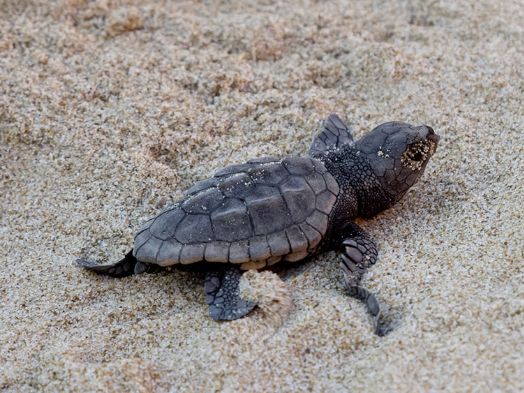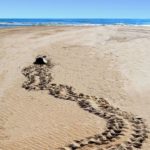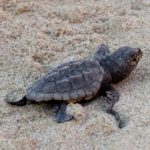In 2023, the beaches of the Valencian Community have become witnesses of “a historic moment for marine fauna”, with nine loggerhead turtle nests being located and hosting the birth of 489 hatchlings, thus surpassing any previous historical record where, at most, only one nest was located per season.
Thus, this year has meant “confirmation that sea turtles are colonising the beaches of the Spanish Mediterranean as a new nesting area,” explained the not-for-profit association, Xaloc Mar, in a statement.
“This phenomenon is not only an unprecedented milestone from a historical point of view, but also a scientific event of great relevance for our coasts,” stated the NGO.
The first nest was discovered in Dénia (Alicante) during the early hours of June 17, with three other nests recorded in the same town. Gandia (Valencia), Elx, Santa Pola (Alicante) and València also witnessed this amazing process, culminating with the discovery of the last nest on September 24 in Almassora (Castellón).
This extraordinary event is not limited to the Valencian coast, since the rest of the Spanish Mediterranean also experiences an exceptional nesting season, with ten nests in Catalonia, six in the Balearic Islands, two in Murcia and two in Andalusia.
The effective coordination by the University of Valencia of the Valencian Community Stranding Network has been essential to attend to all the nests on the Valencian coast.
In each case, after the warning through the emergency call centre, 112, experts from the University of Valencia, the Oceanogràfic, the Polytechnic University of Valencia and the Generalitat Valenciana attended.
In some cases, such as that of the turtle named Diana, a satellite transmitter could be placed in her shell after laying her eggs, thus tracking her position after returning to the sea. In this way, other nests laid by these turtles have been detected and protected in the Valencian Community and in other regions of Spain.
To guarantee the protection and survival of the nests, the first five were moved to Playa de la Punta, a protected area of the Albufera Natural Park. In other cases, the nests were moved by the UV team to beaches with good conditions near the nesting site.
The singular incident in Almassora stands out, where the nest was located after alerting individuals who were on the beach about the presence of hatchlings on the sand after their birth. “Citizen collaboration has been essential in locating the nests during this exceptional season,” the organisation highlighted.
Individuals and beach cleaning service personnel have played a crucial role in alerting the Stranding Network through 112, thus contributing to the care of a globally threatened species. Caring for the nests has been a joint effort between various entities.
In addition to the previously mentioned institutions, the Xaloc Association, Ecologistas en Acción-Elche, the Parador de El Saler, the Biodiversity Foundation and the City Councils of Dénia and Elche have played fundamental roles in the management of the nests.
The data collected during this year, along with records since 1988 when the Valencian Community Stranding Network was created, will be analysed by the VARACOMVAL project specialists.
This project, an initiative of the Marine Zoology unit of the University of Valencia, has the support of the Biodiversity Foundation of the Ministry for the Ecological Transition and the Demographic Challenge) within the framework of the NextGenerationEU Recovery, Transformation and Resilience Plan, will allow the development of plans and conservation strategies for the loggerhead sea turtle on our coasts.








